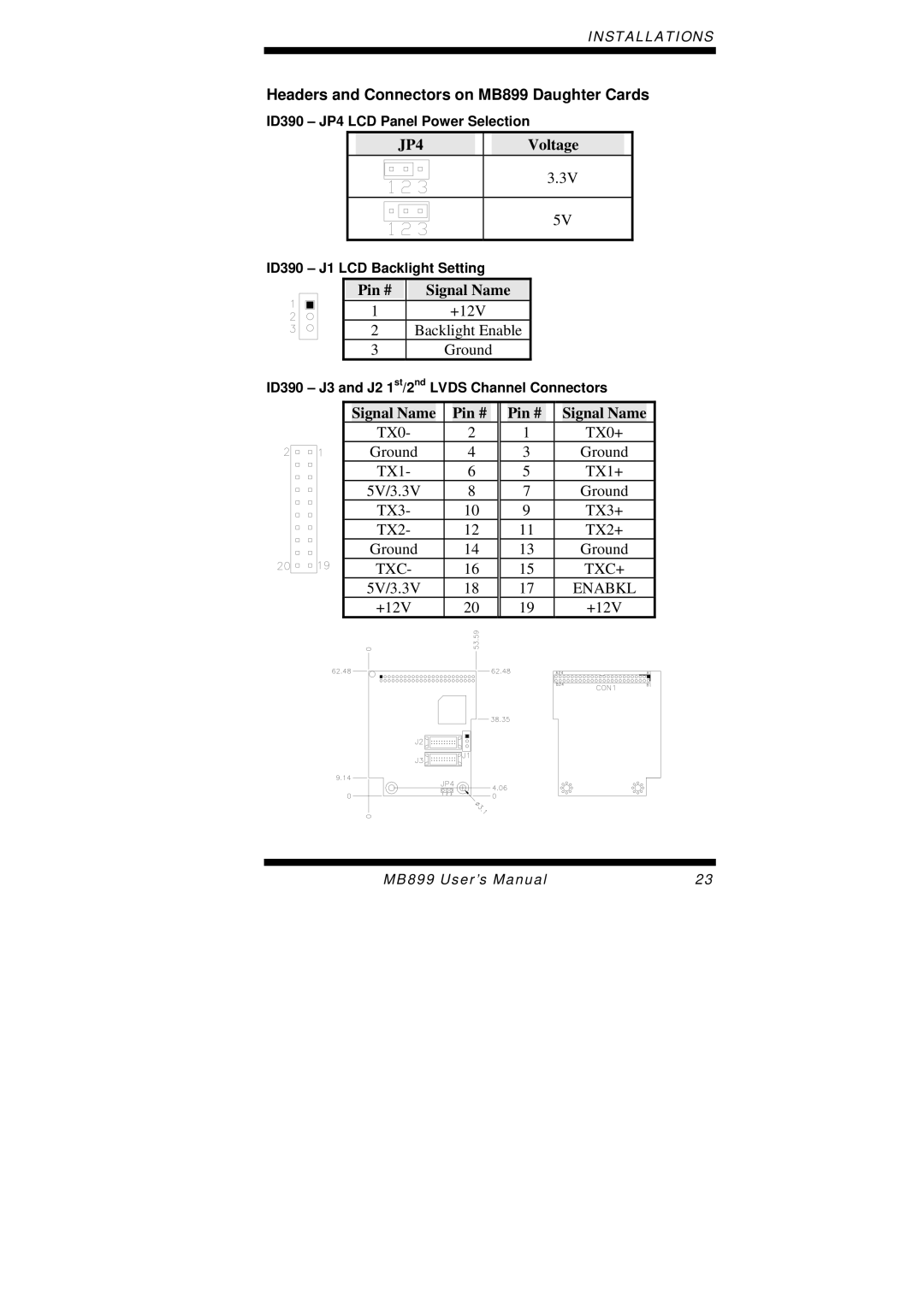MB899 specifications
The Intel MB899 is a sophisticated microcontroller unit designed primarily for automotive applications and industrial control systems. This versatile device is a part of Intel's broader strategy to provide robust and scalable solutions that cater to the demanding requirements of modern electronic systems. Featuring a mix of performance, power efficiency, and comprehensive connectivity options, the MB899 is well-suited for a variety of applications.One of the standout features of the Intel MB899 is its powerful 32-bit RISC architecture, which allows for high-speed processing and efficient execution of complex algorithms. This architecture ensures that the microcontroller can handle intensive tasks with ease, making it ideal for applications such as engine control units and advanced driver-assistance systems.
The MB899 is equipped with an array of integrated peripherals, including ADCs (Analog-to-Digital Converters), multiple timers, and interfaces like CAN (Controller Area Network), LIN (Local Interconnect Network), and SPI (Serial Peripheral Interface). This extensive set of functionalities enables seamless communication and control in automotive environments, where real-time data handling is crucial.
Energy efficiency is a significant consideration in the design of the MB899. The microcontroller incorporates power-saving features that help reduce overall power consumption, making it suitable for battery-operated systems and applications where energy efficiency is critical. These features are especially important in vehicles, where reducing power draw can lead to improved fuel efficiency.
Another important characteristic of the Intel MB899 is its reliability and ruggedness. Designed to endure harsh environments, the microcontroller can operate in a wide temperature range and withstand vibrations and electromagnetic interference. This robustness makes it suitable for use in critical applications, where failure is not an option.
Moreover, the MB899 benefits from Intel’s commitment to security. With integrated security features, the microcontroller can support secure boot processes and protect against unauthorized access, thus ensuring the integrity of the applications running on it. This aspect is increasingly important in the context of connected vehicles and IoT devices, which are frequently targeted by cyber threats.
Overall, the Intel MB899 microcontroller stands out for its powerful performance, extensive connectivity options, energy efficiency, reliability, and security features. These traits make it an exceptional choice for automotive and industrial applications, reinforcing Intel's position in the competitive landscape of microcontroller technology.

